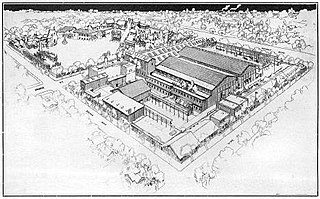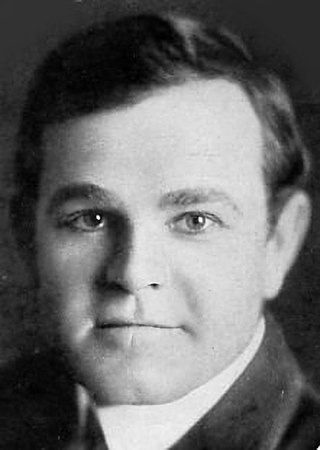
Cecil Blount DeMille was an American filmmaker and actor. Between 1914 and 1958, he made 70 features, both silent and sound films. He is acknowledged as a founding father of American cinema and the most commercially successful producer-director in film history. His films were distinguished by their epic scale and by his cinematic showmanship. His silent films included social dramas, comedies, Westerns, farces, morality plays, and historical pageants. He was an active Freemason and member of Prince of Orange Lodge #16 in New York City.

Paramount Pictures Corporation, doing business as Paramount Pictures is an American film and television production and distribution company and the namesake subsidiary of Paramount Global. It is the sixth-oldest film studio in the world, the second-oldest film studio in the United States, and the sole member of the "Big Five" film studios located within the city limits of Los Angeles.

David O. Selznick was an American film producer, screenwriter and film studio executive who produced Gone with the Wind (1939) and Rebecca (1940), both of which earned him an Academy Award for Best Picture. He also won the Irving Thalberg Award at the 12th Academy Awards, Hollywood's top honor for a producer, in recognition of his shepherding Gone with the Wind through a long and troubled production and into a record-breaking blockbuster.

Adolph Zukor was a Jewish Hungarian-American film producer best known as one of the three founders of Paramount Pictures. He produced one of America's first feature-length films, The Prisoner of Zenda, in 1913.

Douglas Elton Fairbanks Jr. was an American actor, producer, and decorated naval officer of World War II. He is best-known for starring in such films as The Prisoner of Zenda (1937), Gunga Din (1939), and The Corsican Brothers (1941). He was the son of Douglas Fairbanks and the stepson of Mary Pickford, and his first marriage was to actress Joan Crawford.

Major film studios are production and distribution companies that release a substantial number of films annually and consistently command the significant share of box office revenue in a given market. In the American and international markets, the major film studios, often known simply as the majors or the Big Five studios, are commonly regarded as the five diversified media conglomerates whose various film production and distribution subsidiaries collectively command approximately 80 to 85% of U.S. box office revenue. The term may also be applied more specifically to the primary motion picture business subsidiary of each respective conglomerate.

Samuel Goldwyn, also known as Samuel Goldfish, was a Polish-born American film producer. He was best known for being the founding contributor and executive of several motion picture studios in Hollywood. He was awarded the 1973 Golden Globe Cecil B. DeMille Award, the Irving G. Thalberg Memorial Award (1947) and the Jean Hersholt Humanitarian Award (1958).

The Hollywood Heritage Museum, also known as the "Hollywood Studio Museum," is located on Highland Ave. in Hollywood, California, United States.

William Wadsworth Hodkinson, known more commonly as W. W. Hodkinson, was born in Independence, Kansas. Known as The Man Who Invented Hollywood, he opened one of the first movie theaters in Ogden, Utah in 1907 and within just a few years changed the way movies were produced, distributed, and exhibited. He became a leading West Coast film distributor in the early days of motion pictures and in 1914 he founded and became president of the first nationwide film distributor, Paramount Pictures Corporation. Hodkinson was also responsible for doodling the mountain that became the Paramount logo also in 1914. After being driven out of Paramount, he established his own independent distribution company, the W. W. Hodkinson Corporation, in 1917, before selling it off in 1924. He left the motion picture business in 1929 to form Hodkinson Aviation Corporation, and later formed the Central American Aviation Corporation and Companía Nacional de Aviación in Guatemala.

Jesse Louis Lasky was an American pioneer motion picture producer who was a key founder of what was to become Paramount Pictures, and father of screenwriter Jesse L. Lasky Jr.

The Squaw Man is a 1914 American silent Western film directed by Cecil B. DeMille and Oscar C. Apfel, and starring Dustin Farnum. It was DeMille's directorial debut and one of the first feature films to be shot in what is now Hollywood.

The Famous Players–Lasky Corporation was an American motion picture and distribution company formed on June 28, 1916, from the merger of Adolph Zukor's Famous Players Film Company – originally formed by Zukor as Famous Players in Famous Plays – and the Jesse L. Lasky Feature Play Company.

Anita King was an American stunt driver, actress, and thoroughbred racehorse owner. In 1915, she became the first woman to drive a car unaccompanied across the United States, with her 49-day journey from Hollywood to New York City.
A movie ranch is a ranch that is at least partially dedicated for use as a set in the creation and production of motion pictures and television shows. These were developed in the United States in southern California, because of the climate.

Film Booking Offices of America (FBO), registered as FBO Pictures Corp., was an American film studio of the silent era, a midsize producer and distributor of mostly low-budget films. The business began in 1918 as Robertson-Cole, an Anglo-American import-export company. Robertson-Cole began distributing films in the United States that December and opened a Los Angeles production facility in 1920. Late that year, R-C entered into a working relationship with East Coast financier Joseph P. Kennedy. A business reorganization in 1922 led to its assumption of the FBO name, first for all its distribution operations and ultimately for its own productions as well. Through Kennedy, the studio contracted with Western leading man Fred Thomson, who grew by 1925 into one of Hollywood's most popular stars. Thomson was just one of several silent screen cowboys with whom FBO became identified.

George Guy Oliver was an American actor. He appeared in at least 189 silent film era motion pictures and 32 talkies in character roles between 1911 and 1931. His obituary gives him credit for at least 600. He directed three films in 1915.

Providencia Ranch, part of Providencia Land and Water Development Company property named for the Rancho Providencia Mexican land grant, was a property in California, US. It was used as a filming location for the American Civil War battle scenes in The Birth of a Nation (1915) and other silent motion pictures. The valley was also the site for two Universal Studios west coast operations in 1914.

Wilfred Buckland was an American art director. Buckland worked as an art director with Cecil B. DeMille and Jesse Lasky, and later with Alan Dwan, from 1914 to 1927. He was Hollywood's first "art director" and is credited with a number of advancements in filmmaking, including the advances in lighting techniques, the development of architectural sets, and the use of miniature sets. In 1924, he was named one of the ten individuals who had contributed the most to the advancement of the motion picture industry since the time of its inception. A 1980 exhibition at the Victoria and Albert Museum in London advanced the argument that "everything we know as 'Hollywood' traces to Wilfred Buckland." Buckland was among the first inductees in the Art Directors Guild Hall of Fame.

RKO Radio Pictures Inc., commonly known as RKO Pictures or simply RKO, was an American film production and distribution company, one of the "Big Five" film studios of Hollywood's Golden Age. The business was formed after the Keith-Albee-Orpheum theater chain and Joseph P. Kennedy's Film Booking Offices of America studio were brought together under the control of the Radio Corporation of America (RCA) in October 1928. RCA executive David Sarnoff engineered the merger to create a market for the company's sound-on-film technology, RCA Photophone, and in early 1929 production began under the RKO name. Two years later, another Kennedy concern, the Pathé studio, was folded into the operation. By the mid-1940s, RKO was controlled by investor Floyd Odlum.

Betty Lasky was an American film historian and author.



















